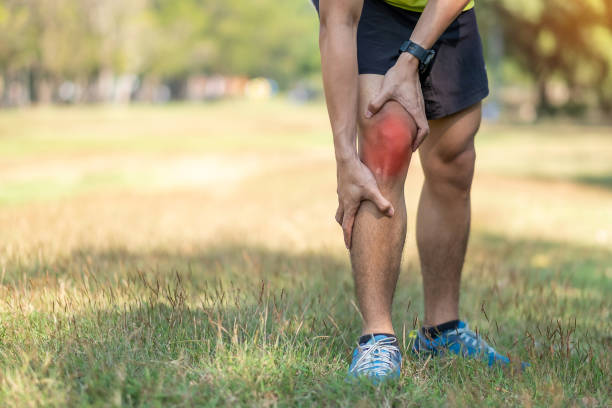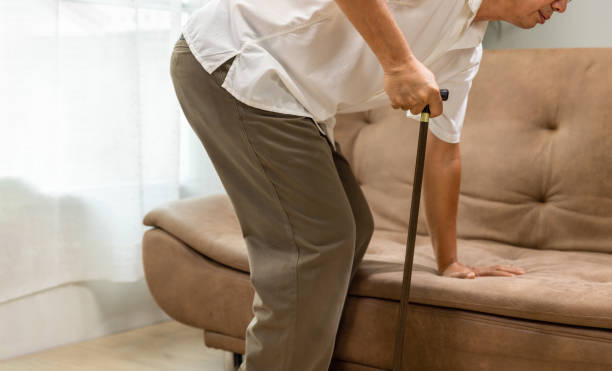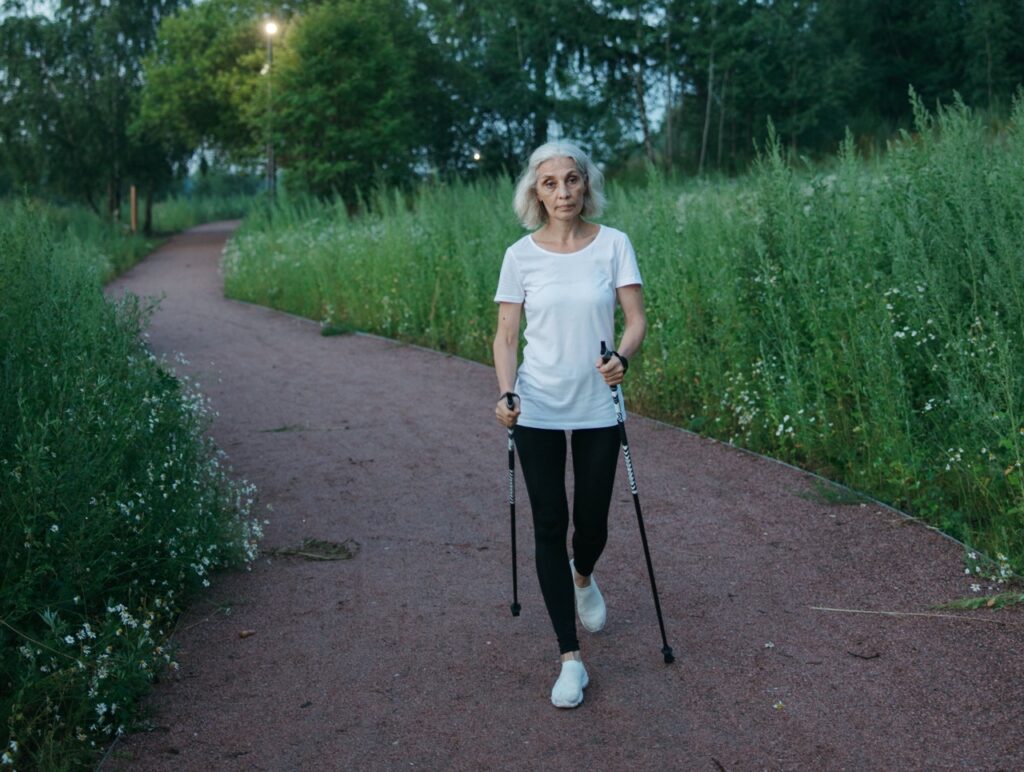Fitness Habits, Joint Health
Is Walking Good For Hip Arthritis
Walking is a basic, low-impact exercise that is frequently recommended for people with hip arthritis. It can assist keep the hips mobile and strong while also delivering cardiac advantages. However, many persons with hip arthritis may find walking uncomfortable or difficult.
Hip arthritis is a disorder that affects the hip joint and causes pain, stiffness, and limited motion. It happens when the cartilage that cushions the joint deteriorates over time, resulting in bone-on-bone contact. Walking can help manage hip arthritic symptoms, but it’s crucial to do so carefully and under the supervision of a healthcare practitioner. In the following parts, we will look at the benefits of walking for hip arthritis, as well as how to get started and keep safe.

Benefits of Walking for Hip Arthritis
Walking is one of the most effective activities for people with hip arthritis. It is a low-impact exercise that can increase joint mobility, muscle strength, pain relief, and overall quality of life. In this part, we will go over the advantages of walking for hip arthritis in depth.
Improving Joint Mobility and Range of Motion
Walking can help to increase joint mobility and range of motion. It can help keep the joints lubricated, reducing pain and making the hip joint simpler to move. Walking can also help release the hip flexors, reducing stiffness and increasing flexibility.
Strengthening Muscles and Supporting Joints
Walking can help strengthen the muscles surrounding the hip joint, thereby supporting the joint and lowering the chance of injury. It can also assist increase overall strength and endurance, allowing patients with hip arthritis to accomplish daily tasks more comfortably.
Pain Management and Reduction
Walking can help relieve the pain and suffering associated with hip arthritis. It can boost the release of endorphins, the body’s natural painkillers. Walking can also help reduce inflammation, which helps relieve hip pain and stiffness.
Enhancing Overall Quality of Life
Walking can improve the overall quality of life for patients with hip arthritis. It can boost mood, reduce tension and anxiety, and enhance sleep quality. Walking can also assist persons with hip arthritis maintain a healthy weight, which reduces pressure on the hip joint.
Finally, walking is a great workout for persons with hip arthritis. It can assist to increase joint mobility, muscle strength, pain relief, and overall quality of life. However, it is critical to contact with a healthcare practitioner before beginning any workout regimen.

Low-Impact Walking Techniques
As we age, our joints become more prone to wear and tear, resulting in illnesses like hip arthritis. Fortunately, low-impact workouts like walking can help relieve joint pain and stiffness, enhance strength and mobility, and increase energy and endurance. In this section, we will look at two crucial low-impact walking techniques: good posture and gait, as well as the usage of assistive equipment.
Proper Posture and Gait
Maintaining good posture and gait is critical for reducing stress on the joints and avoiding further damage. Here are some recommendations for maintaining appropriate posture and pace while walking:
- Keep your head up and your eyes forward.
- Relax your shoulders and keep them level.
- Keep your back straight and your abdomen pulled in.
- Swing your arms naturally at your sides.
- Take small, comfortable steps at a moderate pace.
By following these guidelines, you can help to reduce the impact on your joints and make walking a more comfortable and enjoyable experience.
Use of Assistive Devices
To preserve mobility, people with severe hip arthritis may need to use assistance equipment like canes or walkers. When selecting an assistive device, consider stability, comfort, and ease of use. Here are some suggestions for using assistive equipment when walking.
- Choose a device that is appropriate for your level of mobility and provides adequate support.
- Adjust the height of the device so that it is comfortable and allows for proper posture and gait.
- Use the device on the side opposite to the affected hip to reduce stress on the joint.
- Take small steps and walk at a comfortable pace.
By incorporating these low-impact walking techniques into your daily routine, you can help to manage hip arthritis and improve your overall quality of life.

Complementary Therapies and Lifestyle Changes
When it comes to treating hip arthritis, drugs and surgery are not the only choices. Complementary therapy and lifestyle adjustments can also help alleviate pain and improve mobility. In this part, we’ll look at some of the most effective alternative therapies and lifestyle adjustments for hip arthritis.
Incorporating Stretching and Strengthening Exercises
Stretching and strengthening activities can assist increase hip flexibility and strength, hence reducing discomfort and increasing mobility. Stretching exercises for hip arthritis include hip flexor stretches, hamstring stretches, and IT band stretches. Squats, lunges, leg presses, and resistance band workouts are all good ways to build strength. To guarantee the safety and efficacy of any new workout plan, contact with a physical therapist or healthcare physician first.
Weight Management and Nutrition
Maintaining a healthy weight is essential for controlling hip arthritis since excess weight can put extra strain on the joints. A nutritious diet high in fruits, vegetables, whole grains, and lean protein can also help reduce inflammation and enhance overall health. Fatty fish, almonds, berries, and leafy greens are all excellent anti-inflammatory meals.
Alternative Treatments for Symptom Relief
In addition to established medical treatments, alternative therapies such as cognitive behavioral therapy, acupuncture, and massage can help with hip arthritis symptoms. Cognitive behavioral therapy can assist manage pain and develop coping abilities, whilst acupuncture and massage can help relieve pain and promote relaxation. Before beginning any new alternative therapy, contact with a healthcare physician to establish its safety and efficacy.
Overall, adding alternative therapies and lifestyle changes into a hip arthritis treatment plan can help relieve pain and increase mobility. We may improve our overall quality of life and better manage hip arthritis symptoms by including stretching and strengthening exercises, eating a balanced diet, and researching alternative therapies.

Consulting Healthcare Professionals
When it comes to treating hip arthritis, it is critical to contact with a healthcare professional to identify the best course of action for your unique situation. Physical therapy, medication, and hip replacement surgery are all viable treatment choices.
Physical Therapy and Rehabilitation
Physical therapy and rehabilitation can be very useful in treating hip arthritic symptoms. A physical therapist can assist you in developing a tailored exercise program that targets the afflicted area, increases flexibility, and strengthens the muscles surrounding the hip joint. This can assist to alleviate discomfort and increase movement.
In addition to exercise, a physical therapist may suggest heat or cold therapy, massage, and joint mobilization procedures. These therapies can help to reduce inflammation, boost blood flow, and improve joint mobility.
Medications and Surgical Options
In rare circumstances, medication may be required to alleviate hip arthritis symptoms. Acetaminophen and nonsteroidal anti-inflammatory medications (NSAIDs) are two over-the-counter pain medicines that can aid with inflammation. In some circumstances, prescription treatments such corticosteroids and disease-modifying antirheumatic drugs (DMARDs) may be suggested.
If conservative treatments like physical therapy and medication do not work, hip replacement surgery may be considered. This technique involves removing the damaged part of the hip joint and replacing it with an artificial joint. While hip replacement surgery can be extremely helpful in relieving pain and increasing mobility, it is a serious procedure that should only be chosen after careful deliberation and consultation with a healthcare practitioner.
To summarize, there are various treatment options available for hip arthritis, and consultation with healthcare professionals is critical in identifying the best course of action for your unique requirements. Physical therapy, medicine, and hip replacement surgery are all feasible options, and a healthcare expert can help you decide which is best for you.
Conclusion
Engaging in regular walks has not only alleviated stiffness in my hips but has also contributed to improved joint flexibility. The low-impact nature of walking provides a gentle yet effective way to keep my joints moving, promoting better lubrication and reducing discomfort associated with hip arthritis.
Furthermore, the endorphin release during walking has become a natural mood booster for me. The rhythmic movement and connection with nature during my walks have not only eased physical tension but have also provided a mental escape, fostering a positive mindset amidst the challenges of hip arthritis.
Incorporating walking as a form of exercise has allowed me to maintain a healthy weight, which is crucial for managing hip arthritis. The gradual progression of my walking routine, with attention to proper form and duration, has enabled me to build strength in supporting muscles, providing additional stability to my hip joints.
Journey of self discovery


